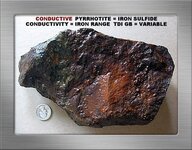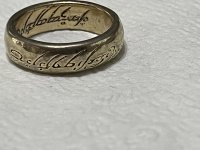TravyLeigh
Full Member
- Sep 17, 2014
- 218
- 72
- Primary Interest:
- All Treasure Hunting
Hey all. So I'm a MXT and GMT user (wanting to learn my GMT better) and I was curious how you folks deal with and better recognize hot rocks?
An area I'm wanting to work is COVERED in hot rocks, and drives the detector and I both nuts, moreso with the sensitivity up. How can I pick out which is a hot rock signal compared to a good one?
Found a piece of bedrock that sounded off with low % of iron, strong signal, then it said high iron, then low again. Pyrite perhaps?
Any tips would be appreciated
Sent from my iPhone using Tapatalk
An area I'm wanting to work is COVERED in hot rocks, and drives the detector and I both nuts, moreso with the sensitivity up. How can I pick out which is a hot rock signal compared to a good one?
Found a piece of bedrock that sounded off with low % of iron, strong signal, then it said high iron, then low again. Pyrite perhaps?
Any tips would be appreciated

Sent from my iPhone using Tapatalk
Upvote
0









